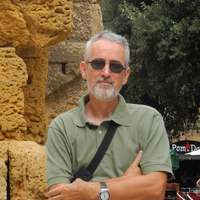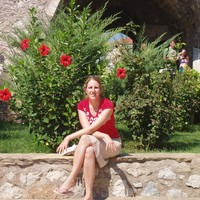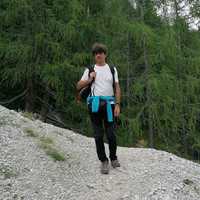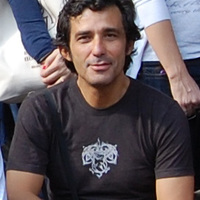Papers by Fiammetta Susanna
VO+XXVIII 581-596 , 2024
The study of sacred areas in North Africa turns out to be complex for several reasons. The most o... more The study of sacred areas in North Africa turns out to be complex for several reasons. The most obvious is related to the state of art, on the one hand because of the lack of archaeological evidence, and on the other hand in the field due to the progressive urbanization of places. A systematic and comparative study of the elements found in the Punic African world and in the Eastern Levant can lead to an understanding of the religious models common to this culture.

Ceramics, 2024
This study reports the analytical investigations on clayey and ceramic finds, characterised by hi... more This study reports the analytical investigations on clayey and ceramic finds, characterised by high variability in terms of prime materials, with the aim to determine the role of this important ceramic production situated close to the city walls, fortuitously found during service excavations developed in the garden of Palazzo Corsini in Rome. The complexity of the finds led to the choices of appropriate methodologies and techniques suitable for defining the diagnostic elements of each find. Optical microscopy (OM) combined with micro-Raman (µ-Raman) spectroscopy, X-ray diffractometry (XRD), scanning electron microscopy with energy-dispersive X-ray spectroscopy (SEM/EDS), and differential thermal analysis (DTA) were used to analyse the nature and microstructure of the ceramic and burned clay that were found. In such a complicated se ing, the objective of conducting chemical analyses is to provide clues to describe the various kinds of ceramics produced, the production and processing methods, and, as a result, the typology of the workshop.
The study reported the analytical approach on nine coins found in the wreck A of Fontanamare for ... more The study reported the analytical approach on nine coins found in the wreck A of Fontanamare for understanding the complex corrosion processes that take place in underwater conditions. Optical microscopy (OM), combined with micro-Raman (µ-Raman) spectroscopy, and X-ray diffractometry (XRD) and scanning electron microscopy with energy dispersive X-ray spectroscopy (SEM + EDS) were used to analyse the nature and the microstructure of the corrosion patina in comparison with the non-degraded state of coins. Three main type of corrosion patina based on copper, lead chloride and carbonate were identified: white-green, black and the obtained results for understanding the complex corrosion processes that take place in underwater conditions.
La vie, la mort et la religión dans l’univers phénicien et punique: Actes du VIIème Congrès International des Études Phéniciennes et Puniques, Vol. 3, 2019 (La mort, la religion / coord. por Ahmed Ferjaoui, Taoufik Redissi), ISBN 978-9973-0974-2-2, págs. 1731-1738, 2019

Environmental Science and Pollution Research, 2019
The mining areas of the Middle Atlas, already inhabited in the Neolithic period, have been under ... more The mining areas of the Middle Atlas, already inhabited in the Neolithic period, have been under the influences of different cultures, firstly Phoenician, then Punic or Ibero-Punic, Berber, Roman and finally Islamic. The impact of external cultures on the evolution and development of ancient metallurgy in the north-central Atlas region and the Southern Rift occurred since prehistoric times to Arab domination in the Middle Ages. This study proposes the development of an up-to-date protocol for archaeometallurgical investigation, based on the correlation between the chemical-physical analysis of the pyrometallurgical materials and the contextual systematic geoarchaeological excavations. The microchemical analysis has been carried out on opportunely selected pyrometallurgical materials, coming from different mining areas of the Middle Atlas regions in Morocco (Tabarouch for Cu and Aouam for Pb/Ag) in order to understand the evolution of the technological knowledge in archaeometallurgical work of local people. After that, the analytical results have been included in a Geographic Information System (GIS) software with the aim of creating an easily usable database that will support multidisciplinary research on the ancient metallurgical activities also with its future development and implementation. The GIS application could indeed correlate all the data coming from different extraction/work sites, present in the exploited mining veins. Furthermore, the GIS application is a starting point for an integrated study of the different mining archaeological sites in the Mediterranean basin proposing an innovative method of data exchange of archaeological, physical and geological chemical results.

Applied Physics A, 2014
ABSTRACT This study focusses on the development and application of an innovative protocol which c... more ABSTRACT This study focusses on the development and application of an innovative protocol which combines chemical data, GIS (geographical information system) and PCA, involving numeric (chemical composition) and categorical (typology of object, archaeological context, chronology and geographical areas) variables, as a simple tool to help in the visualisation and interpretation of large multidisciplinary datasets on Cu-based alloy archaeological artefacts influenced by Phoenician–Punic contacts. The protocol is a useful tool for highlighting existing connections between specific alloy chemical compositions, the location of the original settlement where the artefact had been produced and the proximity to mining resources, waterways, and allochthonous presence such as, in the specific case of this study, the Phoenician and Punic influence in the Iberian bronze production during the Late Bronze Age–Iron Age. The protocol was tested successfully in a case study concerning the precise dating and provenance of bronze statuettes of unknown age and provenance from the Evora Museum collection in Southern Portugal where it confirmed and further refined earlier hypotheses based solely on archaeological and/or chemical studies. The results were interpreted with a unique perspective, to validate the GIS system in combination with experimental chemical-physical data to yield the identification of metallurgical sites of bronze production.

Applied Physics A, 2013
A simple, fast, and nondestructive analytical methodology combining X-ray Fluorescence (EDXRF) an... more A simple, fast, and nondestructive analytical methodology combining X-ray Fluorescence (EDXRF) and Back-scattered Electron Microscopy coupled with Energy Dispersive Spectroscopy (BSEM+EDS) has been applied to characterize the alloy's composition of ex-votos metal statuettes of unknown provenance and age stored in the Museum of Évora in Southern Portugal, and to compare it with Iron-Age artefacts of similar typology recovered from the well-known Phoenician settlement (7th century BC) of Alcàcer do Sal located about 50 km W of Évora. The aim of the study was twofold: (a) to confirm the age and provenance of the bronzes from the Alcàcer settlement; (b) to assess whether the combined archaeometric approach could shed light on the interaction between local (Iberian peninsula) and allochtonous (Phoenician) technological know-how and on how the "Orientalizing" Phoenician influence had been modulated locally in the making of metal artifacts. In this respect, for comparative purposes, selected bronze statuettes N. Schiavon ()
A delicate veil of drops begins to develop on the inside walls.. .. With continuing condensation,... more A delicate veil of drops begins to develop on the inside walls.. .. With continuing condensation, some drops reach such a size that their weight overcomes the forces of adhesion and they run down the walls leaving a trace. This trace starts to grow together again.. .. The image of condensation cannot be precisely predicted. It is changing freely, bound only by statistical limits.
Un viaje entre el Oriente y el Occidente del Mediterráneo A Journey between East and West in the Mediterranean SEBASTIÁN CELESTINO PÉREZ ESTHER RODRÍGUEZ GONZÁLEZ, 2020
The present work aims to bring new elements for an actual interpretation of the economic processe... more The present work aims to bring new elements for an actual interpretation of the economic processes
of Morocco, using information obtained on the basis of new perspectives of archaeological
investigation and with the contribution of data carried out by the use of modern methodologies
based on scientific technologies focused to archeometallurgical activities. This type of
methodological approach could be defined as transversal, since it proposes to embrace several
cultural phases and periods, allowing getting an overview that includes, all branches connected to
social and political implications in which indigenous and allogeneous interlocutors. are involved.











Uploads
Papers by Fiammetta Susanna
of Morocco, using information obtained on the basis of new perspectives of archaeological
investigation and with the contribution of data carried out by the use of modern methodologies
based on scientific technologies focused to archeometallurgical activities. This type of
methodological approach could be defined as transversal, since it proposes to embrace several
cultural phases and periods, allowing getting an overview that includes, all branches connected to
social and political implications in which indigenous and allogeneous interlocutors. are involved.
of Morocco, using information obtained on the basis of new perspectives of archaeological
investigation and with the contribution of data carried out by the use of modern methodologies
based on scientific technologies focused to archeometallurgical activities. This type of
methodological approach could be defined as transversal, since it proposes to embrace several
cultural phases and periods, allowing getting an overview that includes, all branches connected to
social and political implications in which indigenous and allogeneous interlocutors. are involved.